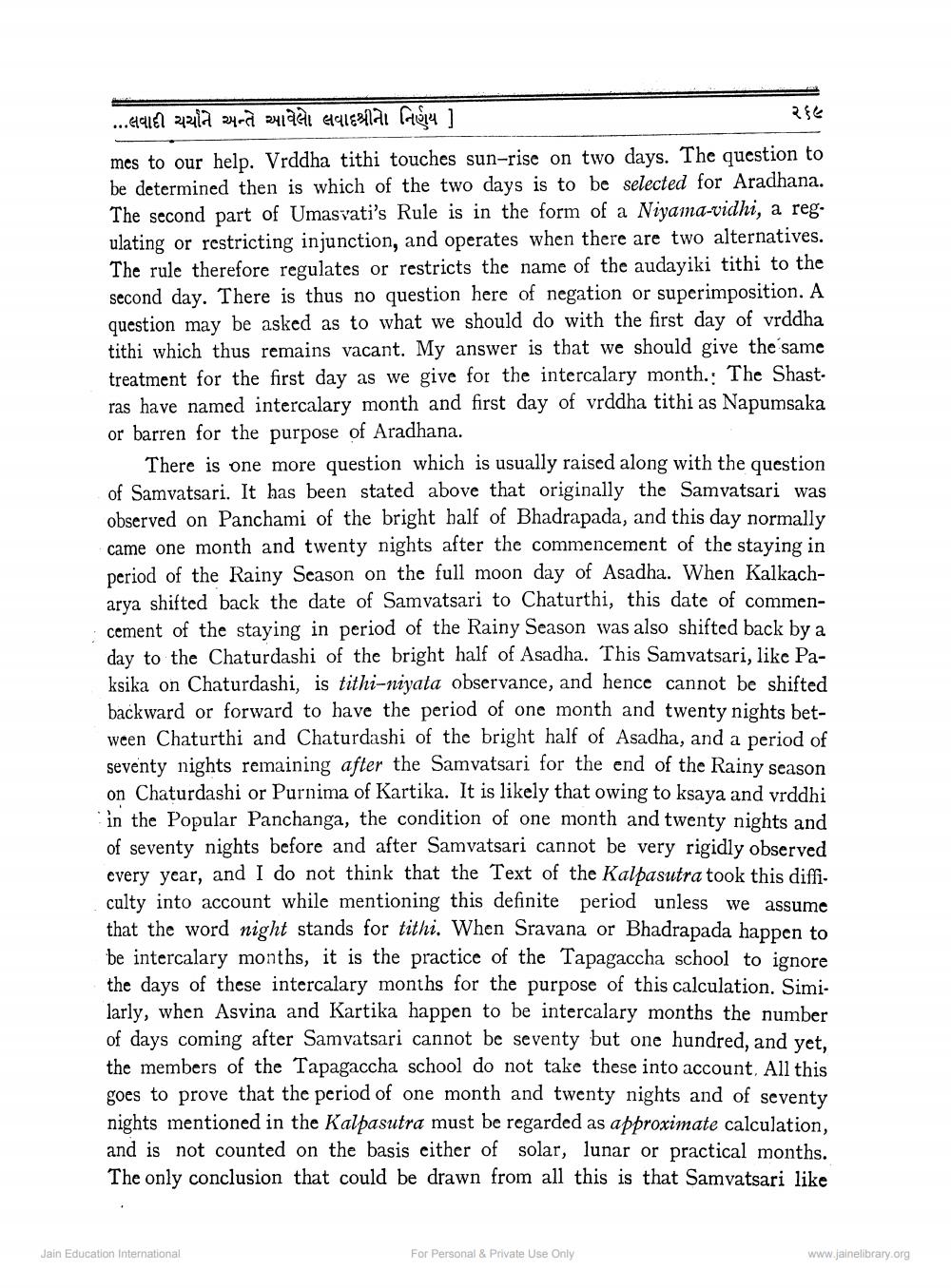________________
...લવાદી ચર્ચાને અને આવેલો લવાદશીને નિર્ણય ]
mes to our help. Vrddha tithi touches sun-rise on two days. The question to be determined then is which of the two days is to be selected for Aradhana. The second part of Umasvati's Rule is in the form of a Niyama-vidhi, a reg. ulating or restricting injunction, and operates when there are two alternatives. The rule therefore regulates or restricts the name of the audayiki tithi to the second day. There is thus no question here of negation or superimposition. A question may be asked as to what we should do with the first day of vrddha tithi which thus remains vacant. My answer is that we should give the same treatment for the first day as we give for the intercalary month.: The Shast. ras have named intercalary month and first day of vrddha tithi as Napumsaka or barren for the purpose of Aradhana.
There is one more question which is usually raised along with the question of Samvatsari. It has been stated above that originally the Samvatsari was observed on Panchami of the bright half of Bhadrapada, and this day normally came one month and twenty nights after the commencement of the staying in period of the Rainy Season on the full moon day of Asadha. When Kalkacharya shifted back the date of Samvatsari to Chaturthi, this date of commencement of the staying in period of the Rainy Season was also shifted back by a day to the Chaturdashi of the bright half of Asadha. This Samvatsari, like Paksika on Chaturdashi, is tithi-niyata observance, and hence cannot be shifted backward or forward to have the period of one month and twenty nights between Chaturthi and Chaturdashi of the bright half of Asadha, and a period of seventy nights remaining after the Samvatsari for the end of the Rainy season on Chaturdashi or Purnima of Kartika. It is likely that owing to ksaya and yrddhi in the Popular Panchanga, the condition of one month and twenty nights and of seventy nights before and after Samvatsari cannot be very rigidly observed every year, and I do not think that the Text of the Kalpasutra took this difficulty into account while mentioning this definite period unless we assume that the word night stands for tithi. When Sravana or Bhadrapada happen to be intercalary months, it is the practice of the Tapagaccha school to ignore the days of these intercalary months for the purpose of this calculation. Similarly, when Asvina and Kartika happen to be intercalary months the number of days coming after Samvatsari cannot be seventy but one hundred, and yet, the members of the Tapagaccha school do not take these into account. All this goes to prove that the period of one month and twenty nights and of seventy nights mentioned in the Kalpasutra must be regarded as approximate calculation, and is not counted on the basis either of solar, lunar or practical months. The only conclusion that could be drawn from all this is that Samvatsari like
Jain Education International
For Personal & Private Use Only
www.jainelibrary.org




